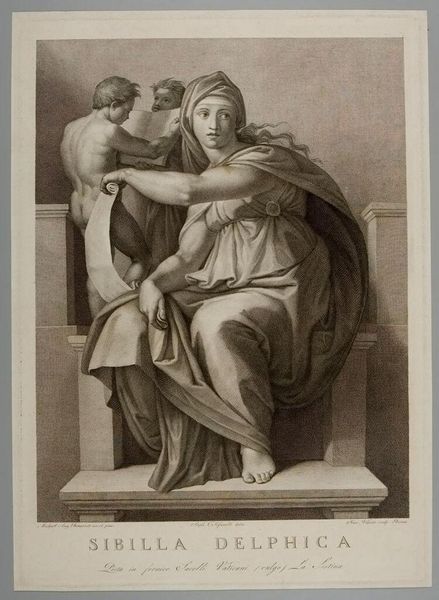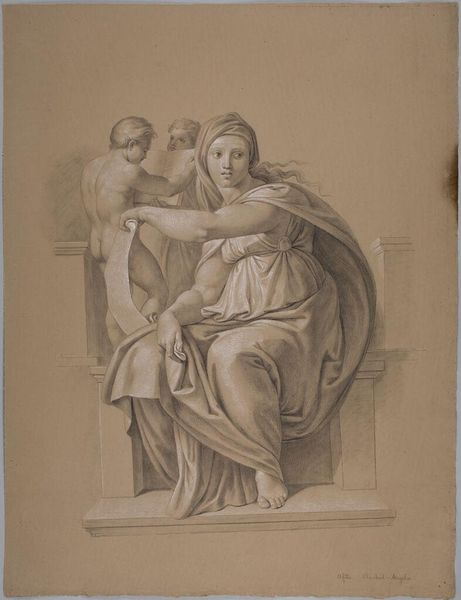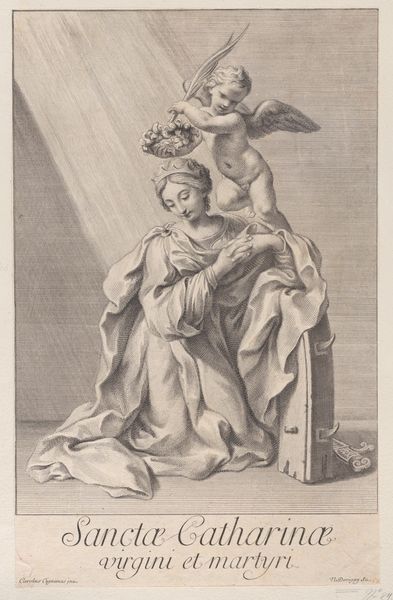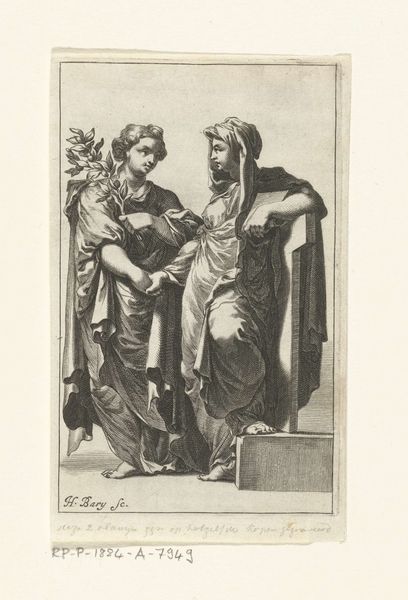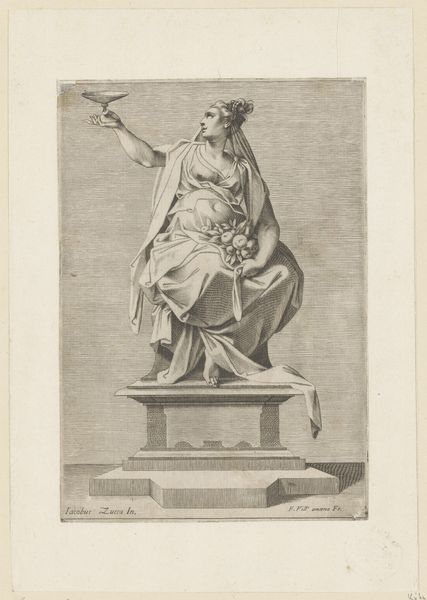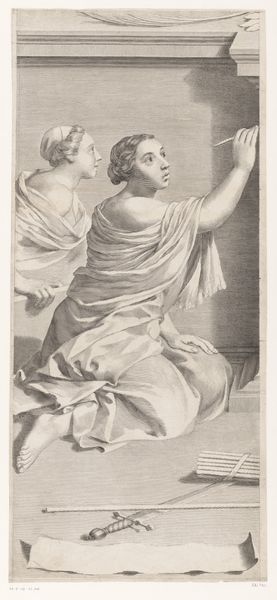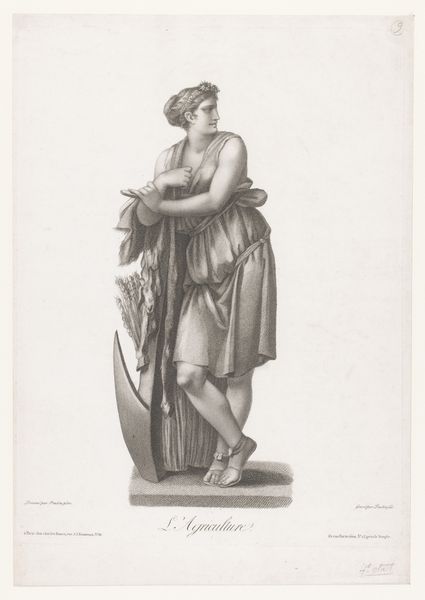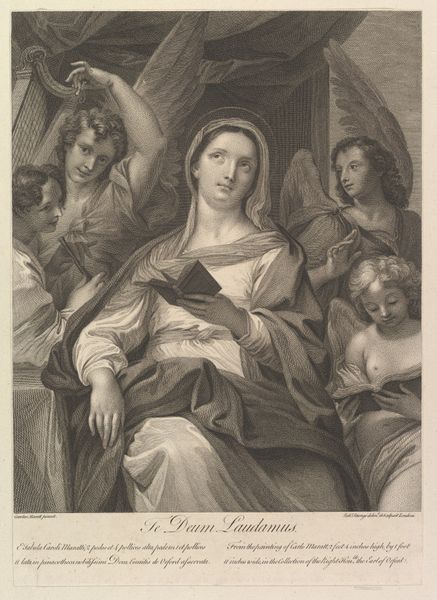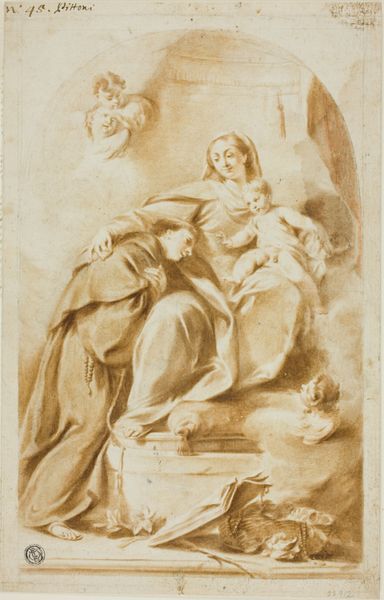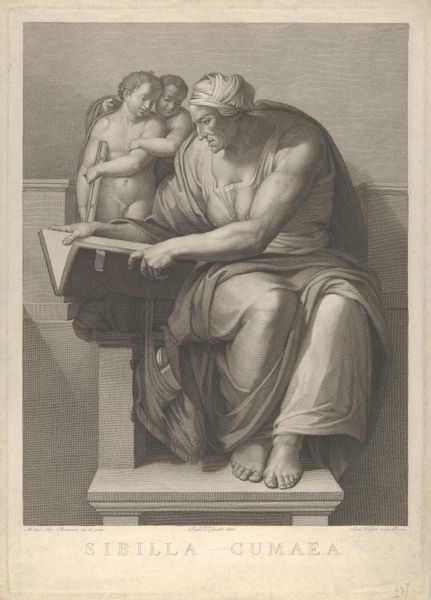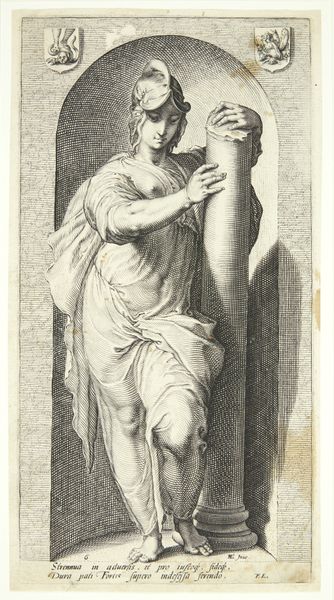
The Delphic Sibyl after the fresco by Michelangelo in the Sistine Chapel 1784 - 1790
0:00
0:00
drawing, print, engraving
#
portrait
#
drawing
#
neoclacissism
# print
#
figuration
#
history-painting
#
engraving
Dimensions: Plate: 21 3/16 × 14 15/16 in. (53.8 × 38 cm) Sheet: 21 7/8 in. × 16 in. (55.5 × 40.6 cm)
Copyright: Public Domain
Editor: So, here we have Giovanni Volpato's engraving, "The Delphic Sibyl after the fresco by Michelangelo in the Sistine Chapel," created between 1784 and 1790. It strikes me as a study in contrasts: the sibyl's serene face against the implied drama of prophecy, and the cool tones of the engraving against what must have been vibrant colors in Michelangelo's original fresco. What do you make of it? Curator: It's interesting that you mention the contrast because it encapsulates a lot of what was happening at that time. This is a Neoclassical piece interpreting a Renaissance artwork, right as the Grand Tour was becoming popular. This print allowed for mass consumption of what had only been available to elites, in Rome. It democratized art. Now, knowing that it served as a souvenir, how does this influence the status of Michelangelo's frescos? Editor: That's a fantastic point! Turning something sacred, a religious scene, into a popular souvenir seems almost...blasphemous? Were there debates about that at the time? Curator: Absolutely. There were discussions around authenticity, originality versus reproduction, and access to art. Prints like this one by Volpato fueled those debates. They raised questions about who gets to define "high" art, and what purpose should art serve – religious, political, decorative, or something else entirely. Looking closer at the sibyl's positioning alongside young scholars or artists in the background, how can we interpret what her gaze means to them? Editor: Hmm, perhaps they see her wisdom as an inspiration? Or perhaps they are reinterpreting that knowledge for a modern world? It feels like Volpato’s engraving becomes a new object of interpretation. Curator: Exactly! Volpato wasn't just replicating Michelangelo. He was participating in an ongoing conversation about art, culture, and the role of the past in shaping the present. It gives us great insight into that time. Editor: That makes me appreciate it much more. Thanks! Curator: You're welcome! Considering historical context can add exciting layers to something we may think we already know.
Comments
No comments
Be the first to comment and join the conversation on the ultimate creative platform.
